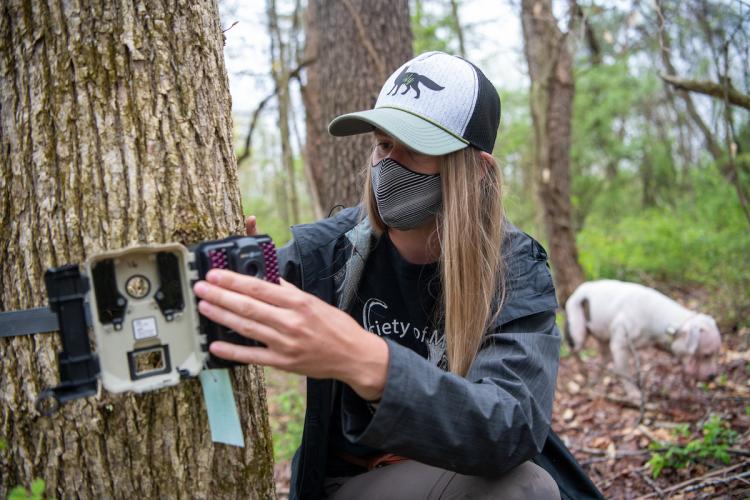
OHIO researcher investigates first assessment of livestock predation risk from brown bears in Romania

Brown bear management and conservation are the core of heated debate about the coexistence of bears and people in Romania, the country harboring the largest population of brown bears in Europe.
For the first time, a team of researchers from the University of Bucharest, Ohio University, and several management agencies and environmental NGOs has assessed livestock predation across a number of factors, types of livestock, differing environments, the nexis of pastures to forests and towns, and even bear abundance including “repeat offenders.”
Livestock predation is the main source of conflict in rural communities in the Romanian Carpathians, as domestic animals are the foundation, and often the main source of income, for local economies. While this topic is prominent in the ongoing discourse around brown bear management in Romania, the drivers determining predation risk to livestock have not been well understood.
Assessing livestock predation risk and mapping risk – and potential human-bear conflict areas – is what a team of researchers led by Dr. Mihai Pop (University of Bucharest) and Marissa Dyck, a Ph.D. student in Biological Sciences at Ohio University, sought to investigate and have recently published in open-access journal Conservation Science and Practice. This study is the culmination of a large collaborative data collection effort spearheaded by three local Environmental Protection Agencies and funded by the LIFE NATURE project LIFEURSUS.
For nine years, between 2008 and 2016, teams of wildlife managers, veterinarians and local authorities responded to bear livestock predation incidents, documenting the type of livestock, number of animals killed, location of events and other relevant data.
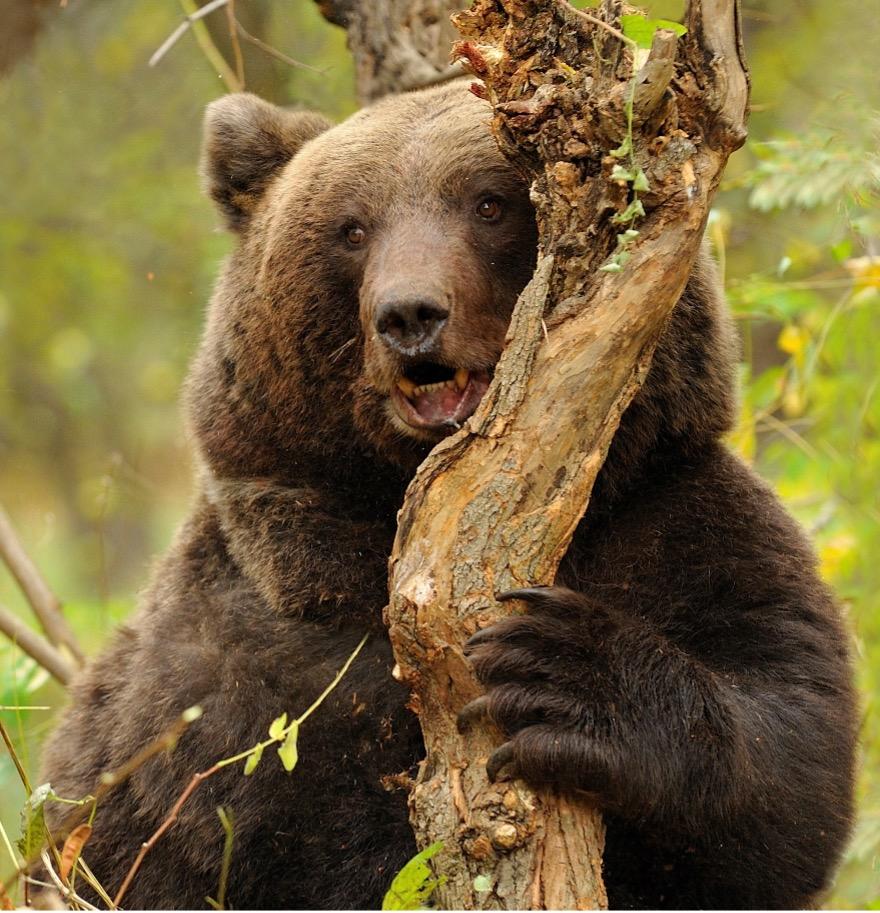
“Overall, we found that three different types of livestock: cows, sheep and other animals, such as pigs, chickens or horses, differed in their exposure and risk to bear predation, and that predation risk was driven by both environmental and social factors, such as grazing regime,” said Dyck, who works with Viorel Popescu, associate professor of Biological Sciences in the College of Arts & Sciences at Ohio University. “In particular, the risk of predation for cows is higher near villages and forest edges, as well as in areas with traditional land use, such as pastures intermixed with small forest patches, or orchards. Sheep had high risk of predation from bears near forest edges and in areas with large continuous pastures, such as those situated at higher elevations.”
The researchers found that, in general, livestock damage was more prevalent near villages, suggesting that bears make use of food resources associated with human habitation, visiting dumps, but also gardens and orchards. In addition, there were no trends through time in the number or type of livestock predation events throughout the study period.
The authors believe that the differences between sheep and cows predation risk is likely due to their different grazing regimes. Cows are often less well guarded, even when grazed away from settlements, with minimal human supervision. Thus, grazing cows near villages and farther from forest edges would lessen the risk of predation. Traditional sheep grazing management involves migration or short transhumance (seasonal movement between summer and winter pastures) between higher altitude meadows during summer and lowland villages during winter. This makes sheep more prone to predation near forest edges in remote areas. In contrast to cows, sheep are well guarded when in remote areas, with constant supervision from sheepherders and guard dogs, who sometimes are present during nighttime in the same corral with sheep and guard dogs.
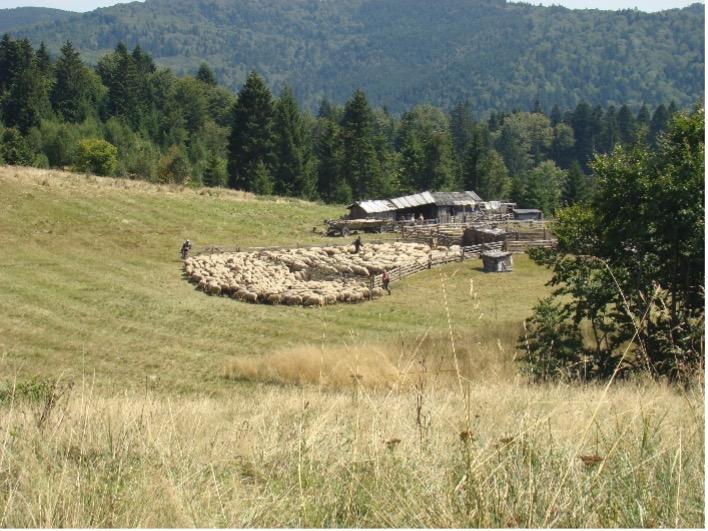
One important finding of this study was that the brown bear abundance was positively associated with predation risk for all livestock species.
"This finding was expected, as many studies of bear predation on livestock have shown a similar pattern,” Pop added. “However, it is important to note that the bear abundances used in this study were not validated scientifically and may not reflect the actual abundance; they are only useful in relative terms, for example if one game management unit had double the abundance of a neighboring unit.”
In a study published in 2016, Pop and colleagues found that the official abundance estimates were not reliable and frequently overestimated the number of bears in two of the counties used in the current study. Therefore, they argue that while bear abundance is indeed influencing predation risk for livestock, this study cannot provide definite cutoffs or thresholds of bear abundance that would eliminate risk.
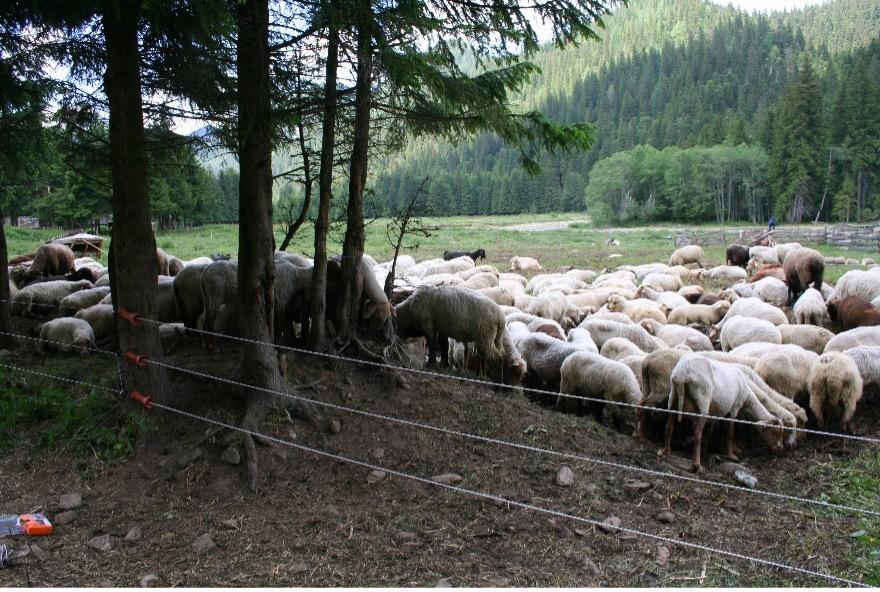
Two other factors add complexity to this issue. First, areas with highest brown bear densities correspond to high food subsidies, either intentional via supplemental feeding of wildlife by managers or unintentional via suboptimal trash management. Second, some predation instances analyzed here were likely done by “repeat offenders,” bears which are habituated to humans, frequently come near villages and predate repeatedly on livestock. This is important from a bear population management perspective. After the 2016 ban on trophy hunting, a management system that can only use lethal methods in cases of conflictual bears has been implemented. Therefore, removing animals that repeatedly prey on livestock could be a feasible strategy to alleviate and minimize livestock losses.
Dr. Cristian Ioja, Professor at University of Bucharest, Department of Geography and co-author on the study, adds that mapping the livestock predation risk at the landscape level provides a critical piece of information toward human-bear coexistence.
“Highlighting high risk areas informs both local communities and management agencies on targeting management solutions,” Ioja said. “These could involve shifting grazing patterns away from high-risk areas, improved livestock defense or decreasing food subsidies that attract bears close to human habitation, both via improved trash management or less supplemental feeding of wildlife.”
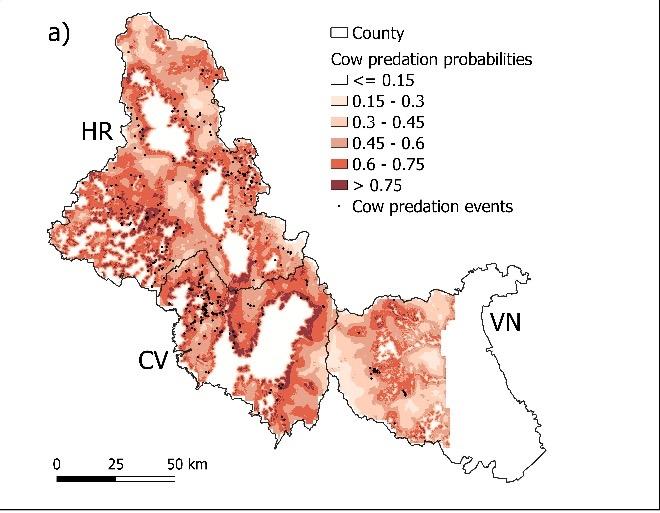
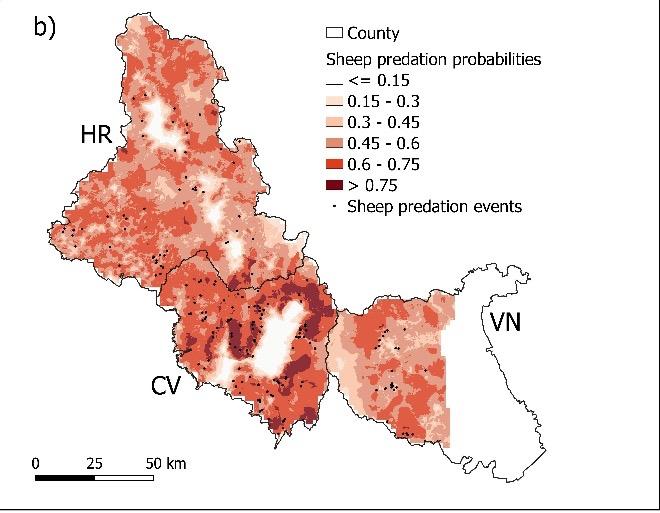
Overall, this study sets the baseline for understanding the landscape of human-bear conflict and opens many other questions about human-bear coexistence. The authors plan to collate data on livestock depredation after the hunting ban (2017 onward) to understand potential changes in the spatial patterns and frequency of depredation events. In addition, the authors plan to collaborate with social scientists to understand the attitudes of local communities affected by livestock depredation toward brown bears and the best solutions to alleviate conflict.
